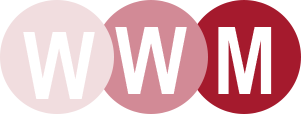Knuckle
Boneless
This is the portion of the bone-in round remaining in front of the femur bone after the removal of the inside round and outside round. The patella, joint capsule and tendon are removed. the Knuckle is trimmed of all external fat, the lip and cap (web) muscles with associated fat, and the precrural gland.
PRODUCTS (BEEF)
Eye of Round
Boneless The complete long eye muscle removed along the natural seam from the full outside.
Rump
Boneless
The rump ‘D’ cut is derived in the same manner as the sirloin butt with the flank or tail of the rump completely removed.
Thick Flank
Boneless
The thick flank is derived in the same manner as the knuckle but the lip and cap (web) muscles and associated fat are left intact.
Sirloin Butt
Boneless
The completely boned portion of the full bone-in rump removed from the rump and loin at the pin bone , includes the flank or tail of the rump with the butt end tenderloin removed.
Shank meat
Boneless
Shank meat comprises the boneless meat derived from the fore shank and the hind shank.
Flat
Boneless
This is prepared from the outside by the removal of the complete eye round along its natural seam.
Outside Round
Boneless
The outside or lateral part of the bone-in round is removed from the inside round (along the natural seam divisions) and cut from the knuckle. The popliteal gland, the cartilage, and gristle from the aitch bone are removed.
Outside Round
Boneless
The outside or lateral part of the bone-in round is removed from the inside round (along the natural seam divisions) and cut from the knuckle. The popliteal gland, the cartilage, and gristle from the aitch bone are removed.
Flank steak
Boneless
The oval flat muscle taken from the leg end of the flank, free of connective tissues and excess fat. Flank steaks are normally layer packed to approximately 27.2kg (60 lb.).
Cube Roll
Boneless
The rib eye roll is the muscle or eye of meat adjacent to the chain bone extending from the 5th rib up to the 12th rib inclusive. It is completely free from bones, cartilage, and sinew, with the outside fat cover removed.
Ribs
Boneless
O.P. ribs are derived from a 12-rib forequarter cut between the 5th and 6th ribs. The width of the O.P. ribs is determined by a cut parallel to the line of the back. The chain bone is completely removed so as to free the feather bones from the rib bones.
Strip loin
Boneless
The boneless striploin is the remaining portion of the short loin after removal of the tenderloin and all bones.
Short Loin
Boneless
The short loin is separated from the rump and loin at the pin-bone and may have from 1 to 3 ribs. The thick flank is removed in a straight line at a distance measured from the outer edge of the eye of the meat, at the rib end and parallel to the chain bone. the tender loin is retained except for the butt end.
Flap
The brisket navel-end boneless is drived from the equivalent of the full bone-in brisket after the removal of the point-end brisket.
Chuck
Boneless
The boneless chuck is derived from that portion of the bone-in forequarter from the neck up to the 6th rib and is trimmed to a specified chemical lean (CL) content. The shoulder clod, brisket and shin meat are removed.
Tenderloin
Boneless
The full tenderloin is removed in one piece from the full rump and loin and trimmed of the fat.
Shoulder boneless
The shoulder clod consists of the large muscles removed from the outside of the blade bone extending from the foreshank joint to the tip of the blade bone cartilage .Heavy exposed tendons at the shoulder joint end are removed.
Shoulder boneless
The boneless point-end brisket consists of the equivalent of the first five ribs of the full bone-in brisket, the latter being drived from the forequarter by a straight cut from the junction of the first rib and first sternal segment, to the reflection of the diaphragm on the 11th rib. The deckle (fat layer) is completely removed by following the natural seam separating the inner and outer layers.
Neck boneless
The chuck tender is the round muscle adjacent to, but separated from the shoulder clod, by the ridge of the blade bone.
Heart
Complete heart Prepared for inspection by a longitudinal incision extending from the base to apex.
Tongue
Short cut tongue with the root removed. Hyoid bone and sub maxillary glands remain in situ. The trachea and root are removed but the mucous membrane between the epiglottis and the tongue is retained. All salivary glands, except the sublingual, are removed, as is excess fat.
Tongue
Swiss cut
The portion of the tongue remaining after the removal of the hyoid bones, a server fat trim and removal of excess muscle from underneath tongue.
Cheek
Tip
Cheeks removed Consists of the papillae, glands and tip.
Cheek
Papillae off Square cut with papillae, glands and tip removed. Blood stains and loos pieces removed.
Cheek
Papillae on
The cheek is the muscle, together with the mouth lining, that lies outside the upper and lower jaw bones. All glands are retained in situ.
Thin Skirt
The thin skirt is the thin portion of the diaphragm. All white tendinous tissue not covering lean red muscle is removed. The pleural membrane covering or skin is removed.
Weasand
Whole weasand skinned (white tissue peeled) split open. Clean of all extraneous matter.
Kidney
The whole kidney from which blood vessels, ureter, capsule and fat have been removed.
Liver
Portal lymph glands attached. Gall bladder and all fat removed.
Head meat
Pieces trimmed from the head after removal of cheek and papillae. Free of blood clots.
Thick Skirt
The thick skirt is the thickest portion of the diaphragm. adjacent to the spinal columns. All fat and loose connective tissue is generally removed.
Tripe
The complete paunch or rumen together with the honeycomb or reticulum. Opened and rinsed clean of any paunch content.
Tripe Mountain Chain
Removed from rumen in one piece-heavily trimmed back to the thick pillar. Fat removed.
Sweetbread
The thymus glands removed from the neck and heart regions with all fat removed.
Spleen
Prepared by the removal of the splenic blood vessels.







































